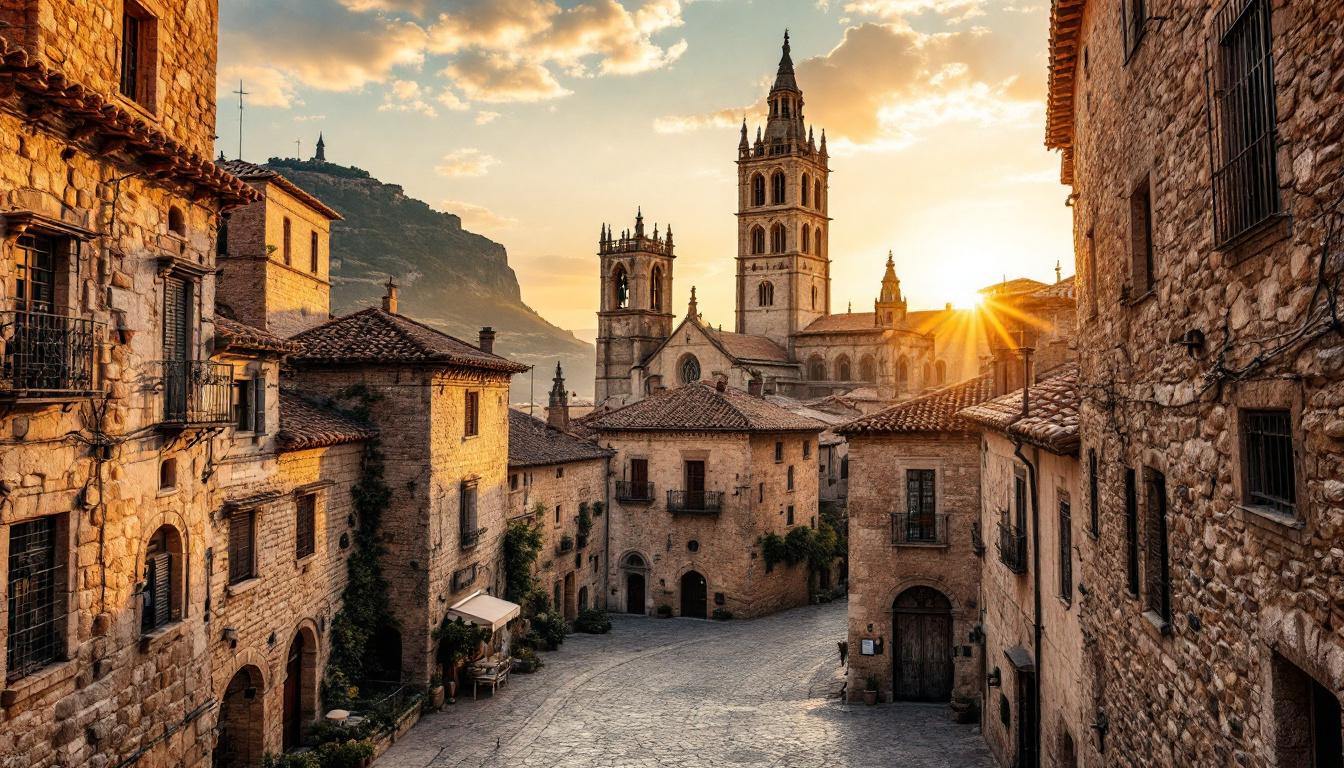Centuries before Instagram made travel destinations famous overnight, Solsona was quietly perfecting its medieval charm in the rugged heart of Catalonia. This stone-walled city of just 9,000 residents sits perched on a hillside in Spain’s Lleida province, where it has maintained an authenticity that larger Spanish cities lost long ago to mass tourism.
Where giants dance through cobblestone streets
Known affectionately as the “City of Giants,” Solsona’s most distinctive tradition involves enormous dancing figures that parade through its narrow medieval streets during festivals. These towering “gegants” represent historical characters and form the centerpiece of celebrations that have remained largely unchanged for centuries.
“Our giants aren’t just festival decorations—they’re the physical embodiment of our history and identity,” explains Maria Codina, a local historian. “When they dance through our streets, we’re connecting directly with our ancestors who did exactly the same hundreds of years ago.”
A cathedral that whispers secrets of the past
Dominating Solsona’s skyline is its Gothic cathedral, featuring a stunning rose window that catches the morning light in a display that’s remained unchanged since the 13th century. Unlike larger Spanish cities where cultural fusions shaped architecture, Solsona’s cathedral maintains a purely Catalan Gothic aesthetic that reflects the region’s independent spirit.
Adjacent to the cathedral stands the Romanesque bell tower, its weathered stones bearing witness to over eight centuries of Solsona’s history. These ancient structures frame the Plaza Mayor, where twice-weekly markets continue a tradition that has connected local farmers with townspeople since medieval times.
The secret ice well that powered a city
Perhaps Solsona’s most fascinating hidden feature is its “Pou de Gel” (ice well)—an ingenious medieval refrigeration system carved directly into bedrock. This 10-meter deep cylindrical structure once stored winter ice harvested from nearby mountains, preserving food throughout summer months long before electricity existed.
Where medieval walls tell stories of legendary battles
Solsona’s defensive walls recall an era when knights battled along fortified perimeters. These ancient stone barriers protected the city through centuries of conflict, with the imposing Portal del Castillo (Castle Gate) standing as testament to turbulent times when Catalonia fought to maintain its cultural identity.
The curious case of the “donkey killers”
Locals proudly identify as “Matarrucs” (donkey killers)—a peculiar nickname with medieval origins. This unusual moniker stems from historical conflicts with neighboring villages and represents how Solsonans have outwitted adversaries for centuries, much like other Catalan towns with their own distinctive legends.
Beyond stone walls: natural wonders await
Surrounding Solsona, the Solsonès region offers exceptional hiking and cycling opportunities through Mediterranean landscapes. Unlike nearby villages that transform into winter sports destinations, Solsona maintains its cultural focus year-round, with outdoor activities complementing rather than overshadowing its historical character.
“What makes Solsona special is this perfect balance between human history and natural beauty,” says Josep Vilaseca, a local guide. “Within minutes, you can move from thousand-year-old streets to pristine forests that feel untouched by time.”
A hidden gem among hidden gems
Unlike other medieval villages that travelers often bypass, Solsona rewards those who take time to discover its secrets. From its carved wooden eaves featuring 500-year-old details to the quiet courtyards where time seems suspended, this city offers an authenticity increasingly rare in popular European destinations.
When evening falls and golden light bathes Solsona’s ancient stones, visitors understand why this place has remained special for over a millennium. In a world where travel experiences often feel manufactured, Solsona stands as a reminder that some places still hold tight to their soul—a medieval jewel waiting to be discovered by those willing to look beyond the obvious.
